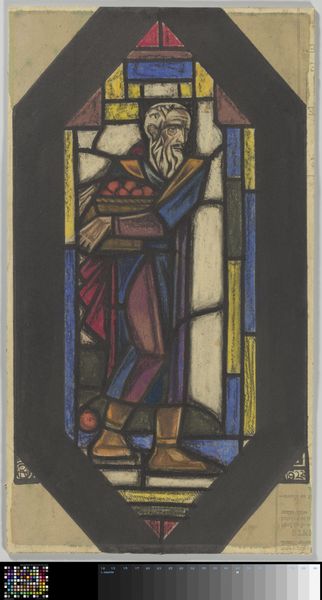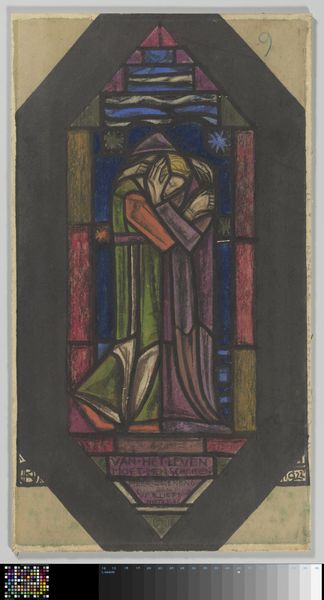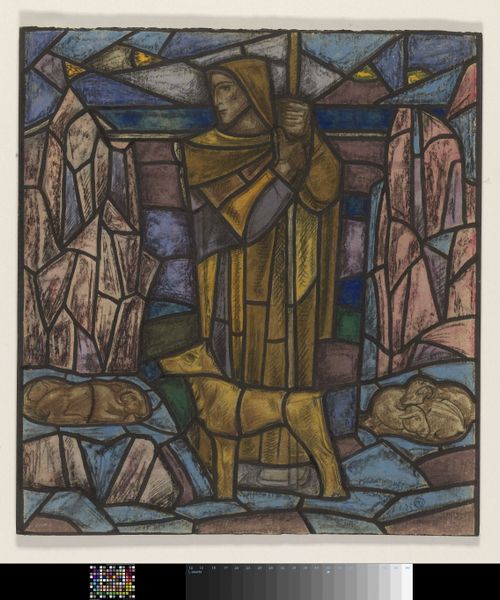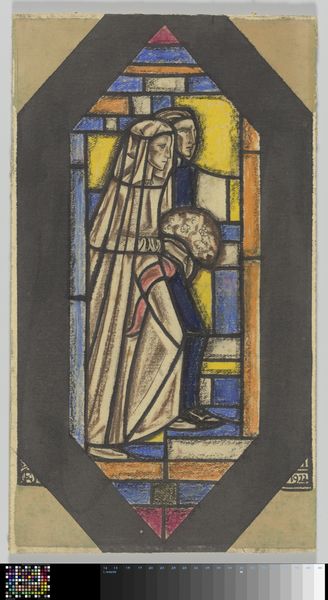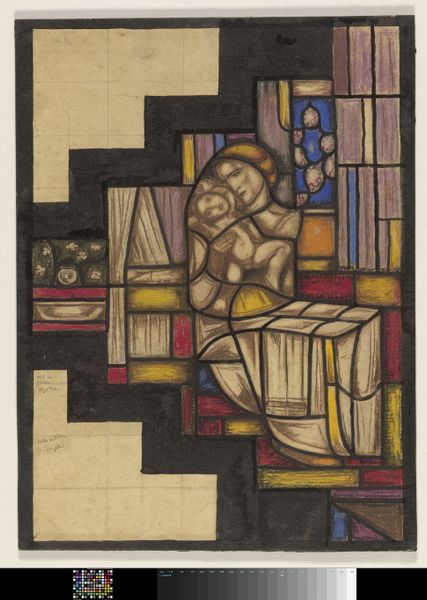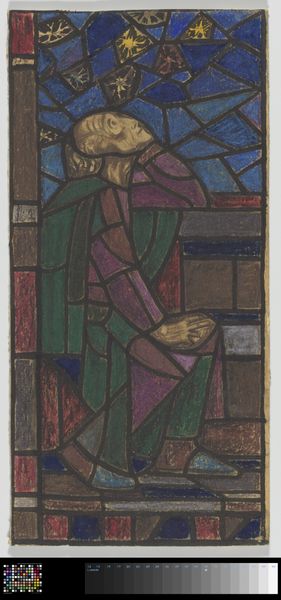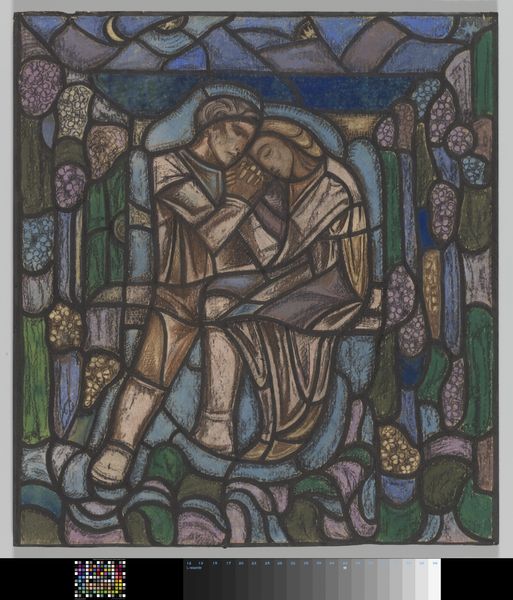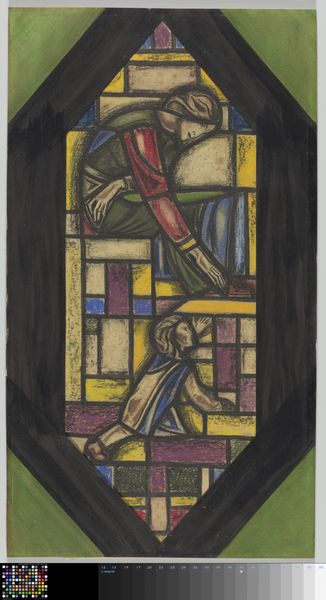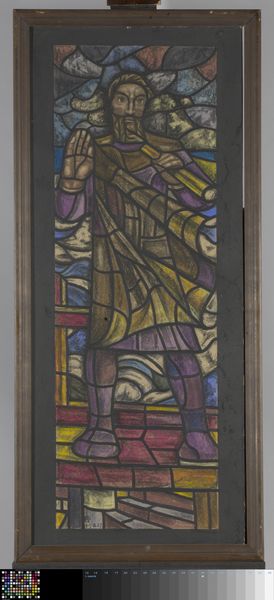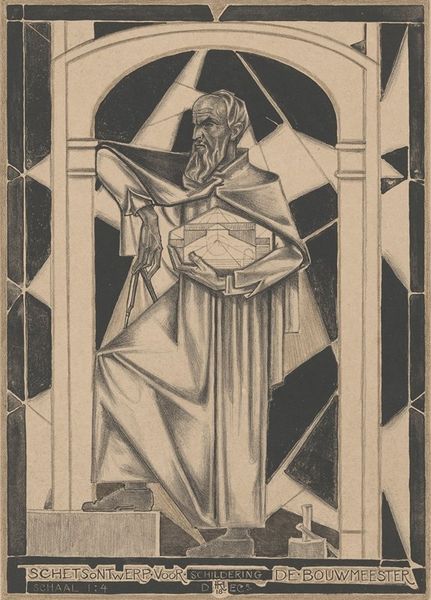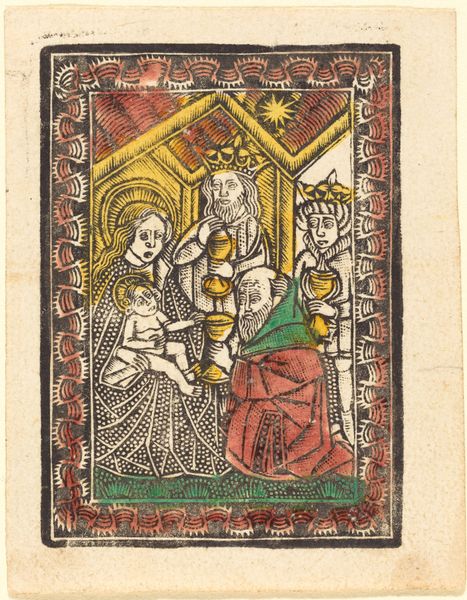
Dimensions: height 684 mm, width 403 mm, height 634 mm, width 358 mm
Copyright: Rijks Museum: Open Domain
Curator: Here we have Richard Nicolaüs Roland Holst's "The Stairway of Life," created around 1922. It’s currently held in the Rijksmuseum collection. What's your initial response? Editor: The first thing that strikes me is the melancholy. The muted colors, the downcast figure... it all evokes a profound sense of introspection and perhaps even a little bit of weariness. Curator: That’s a very astute observation. Considering Holst's social activism, the work reflects on the individual's path within a larger, potentially oppressive social structure. Note the symbolism and the conscious echoing of stained glass. Holst designed and advocated for public art. Editor: The composition reinforces that interpretation. The geometric structure feels almost like a cage, trapping the figure in a predetermined pattern of existence. The lines are sharp, rigid... very deliberate. But note also the organic tendrils near the figure’s head—a possible release or symbol of knowledge? Curator: Precisely! This drawing demonstrates Holst's unique combination of symbolism and Art Nouveau aesthetics, often deployed in the service of social critique and reflecting the spiritual-political climate of the Netherlands between the wars. Think of the role of guilds, workshops for art, which promoted collectivism and the creation of affordable and morally uplifting art for the masses. Editor: The tension between those angular shapes and the figure's own curved form—particularly the head and arms—is quite powerful. It sets up a fascinating dialogue between constraint and autonomy, and a deep contrast against that overall grid. I want to draw the eye to the colour scheme – how each segment holds only 1 or 2 hues, each subtly related to a nearby colour through tonality rather than shade. Curator: Holst indeed was profoundly invested in this dialogue and was actively involved in pushing it in his work, public teaching, and his commissions throughout the country. Editor: Looking at the image with fresh eyes, I wonder if the artist were trying to encourage society through this representation or showing concern for it. The geometry, the human condition...it's really a unique artwork. Curator: Agreed, considering how Roland Holst saw his social position in this historical period, one really gets the essence of his political statement about society here. A rare and captivating item of cultural memory.
Comments
No comments
Be the first to comment and join the conversation on the ultimate creative platform.
